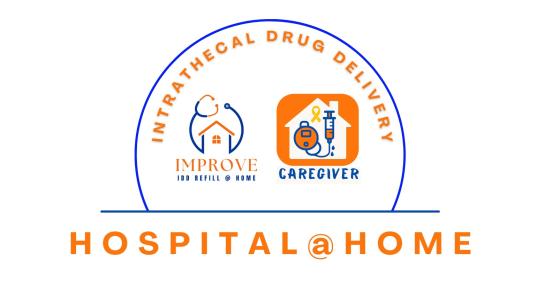
IDD consortium
- Prof. Dr. Maarten Moens (VUB/UZB)
- Prof. Dr. Lisa Goudman (VUB/UZB)
- Prof. Dr. Koen Putman (VUB)
- Dra. Britt Winnepenninckx (VUB)
- Dra. Ulrike Van Hoey (VUB)
Study design and outcomes
We will include 82 patients in this two-arm, randomized cross-over trial. Each patient will receive two pump refills @home and two refills @hospital.
After each refill, outcomes will be assessed by both the patient and the one performing the refill procedure. Outcomes will focus on patients’ comfort, patient preference and procedure safety. Finally, a health economics evaluation will be performed through discrete choice experiments (DCE) and a willingness-to-pay analysis. The study flowchart and outcome assessment are provided below.
Contact
Please contact stimulusresearchgroup@gmail.com for more information about the trial.
The study received funding from the Research Foundation Flanders through the FWO-TBM call and organization Stichting tegen Kanker.
Project overview
Intrathecal drug delivery (IDD) is a well-known treatment for severe spasticity and chronic refractory pain syndromes of both cancer and non-cancer origin. In case of pain, initial treatment typically consists of pharmacological therapy, with or without opioid analgesia. In some patients, interventional neuromodulation techniques can be successfully applied if pain becomes chronic and unmanageable with pharmacotherapy. Unfortunately, a subset of these patients continue to experience insufficient pain relief despite previous treatments, with a disastrous impact on their quality of life and global well-being. In those cases, and possibly even earlier stages of pain management, IDD may offer an underestimated therapeutic alternative. IDD and its benefitsIDD delivers very low doses of opioids or other drugs directly to the spinal cord through a small catheter, connecting the intrathecal space with an implanted subcutaneous pump. For IDD to work, a small intervention is needed to implant the pump in a subcutaneous region of choice, mostly the abdominal region. This pump contains a medication reservoir that must be refilled 4-6 times a year. This procedure takes a few minutes and consists of puncturing the reservoir and refilling it with a new dose of medication. As drugs are administered directly to the site of action, lower doses of drugs are administered when compared to peroral treatment. This may not only offer greater efficacy but also reduces drug toxicity which negatively impact the patient’s quality of life. Specifically in case of cancer pain where high doses of opioids offer unsatisfactory pain relief or inacceptable adverse events (eg. sedation, respiratory depression), IDD may offer a solution. Study objectiveThe goal of improve is to perform the refill procedures @home, as we strongly believe this will improve both quality of life and patient well-being. Therefore, the study focuses on performing pump refills @home which offers benefits for the patient in terms of patient comfort. |
Study interventions
Refill @home (intervention)
Refills will be performed by our STIMULUS team in the home setting. Close interaction with the outpatient hospital will be established for practical issues (medication dosage, refill day).
Refill @hospital (control)
Refills will be performed in the hospital setting according to the outpatients’ clinic practices.
Study status
Ethical approval has already been obtained. The study will start recruitment shortly.
